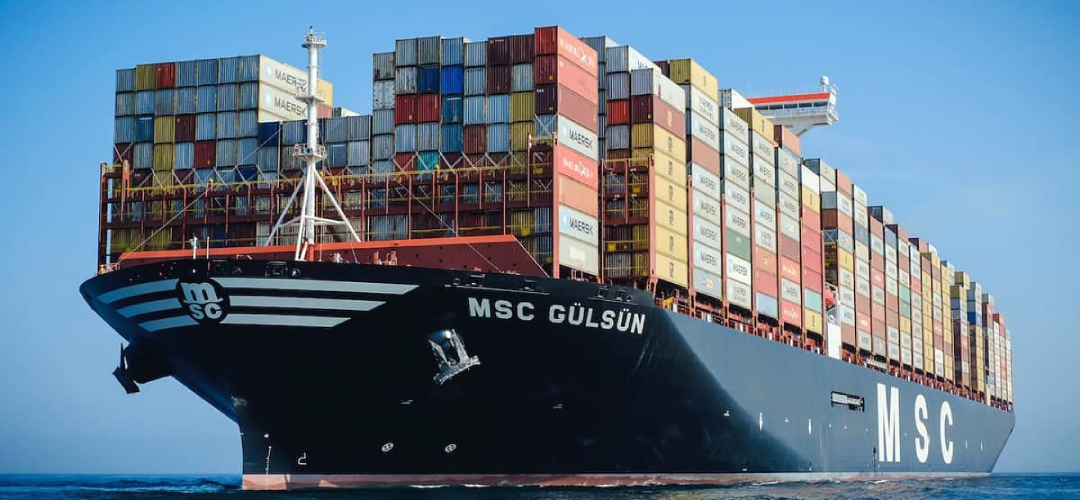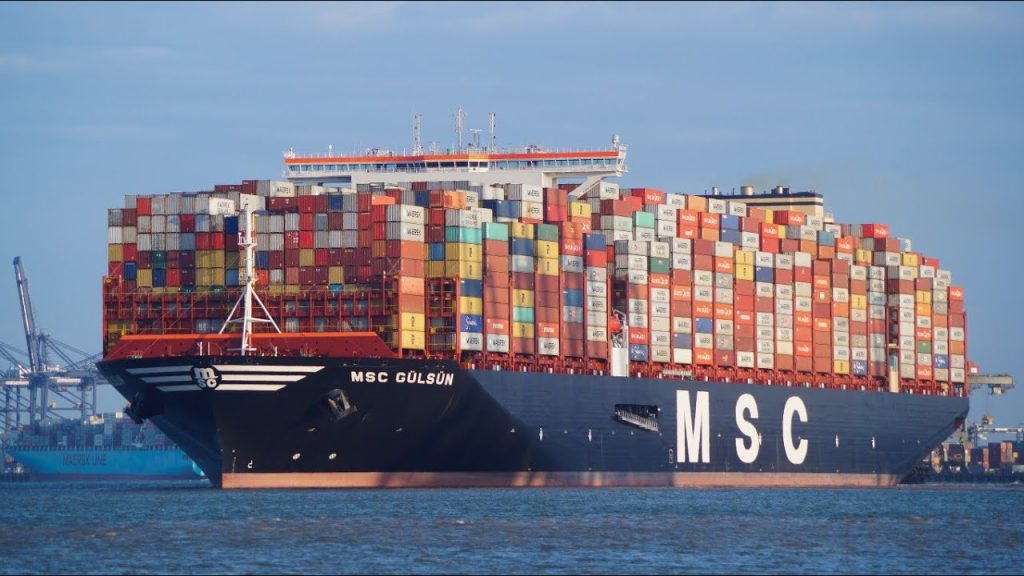Bigger Not Always Better
April 13, 2024 | Expert Insights

The Ever-Given incident, which stopped the Suez Canal for six days in 2021, is a good example of how massive ships pose a serious danger to our shipping lanes. The half-a-mile-long vessel, with 18,300 containers on board, was transiting through the narrow Suez Canal in a convoy of ships when caught in a sandstorm, it swung, jamming the single-lane canal stretch. The ensuing marine traffic jam held up over 400 container ships, amounting to nearly USD 60 billion in total trade. Stores had to make arrangements to restock through air freight or replacement pieces.
The act was repeated, albeit with far more tragic consequences, when the Dali, loaded with 4,700 containers, collided with Baltimore's Francis Scott Key Bridge on March 26, 2023. The collision caused the bridge to collapse, and six construction workers who were patching potholes at the time were assumed dead. Even worse, the financial losses were enormous, impacting the worldwide supply chain and interrupting shipping at one of the biggest ports on the U.S. East Coast.
An interesting fact, although unrelated to the cause of the accident in any way, is that Indian merchant mariners manned both ships.
Background
Hidden from public view lies the fact that global shipping enables the consumption of most items of our daily use, from bananas to snazzy smartphones, by affording the cheapest means of transportation. Only when a tragedy strikes the humble merchant ships come under media glare. It is entirely due to the cost savings enabled by the shipping industry that has helped build globalised economy-rich nations find it cheaper to ship goods made elsewhere than manufacturing them at home.
Mega-ships, or ultra-large container vessels (ULCVs), are the largest ships ever built, with capacities exceeding 20,000 TEUs (20-foot equivalent units, or the number of 20-foot-long containers a ship can load). They were introduced into the global maritime industry to maximise economies of scale, reduce slot prices, and increase operational efficiency. The largest of these brutes are called megamaxes in the trade and measure 25,000 TEUs.
As vessel capacity increases, building cost per TEU drops, resulting in a marginal decline in cost savings as ship size increases. Larger ships are marginally more operationally effective than smaller ships, with an annual savings of approximately $50 per slot on a 19,000 TEU ship vs a 16,000 TEU vessel. However, the true savings are in fuel expenses because mega-ships burn less fuel per container on a voyage than smaller ships. The requirement to fill mega-ships is one of the reasons why the industry is forming alliances. Shipping firms are adopting the hub-and-spoke approach used by airlines to ensure their ultra-large container vessels are filled close to full capacity and spend as much time at sea as feasible. According to the OECD, mega-ships are "astonishingly fuel efficient" and utilise less fuel each voyage than 16,000 TEU carriers.
As per Foreign Policy (27 Mar 24), the world's fleet of ULCVs features a growing number of beasts that can transport in excess of 23000 TEU, MSC Irina (24,346 TEU), for example. In fact, with a capacity of 10,000 containers, the Dali is just a midsize box ship! Fifty years back, the largest container ship could hold a mere 3,000 containers at most.

Analysis
Hypothetically, ships can be made as large as desired, but their sheer size and operational requirements have posed several obstacles impacting global trade. Mega-ships encounter substantial navigational and manoeuvrability obstacles, especially in confined channels or poor weather conditions.
The trends in mega-ship accidents show increased incidents involving large vessels, particularly container ships and roll-on roll-off (ro-ro) car carriers. These accidents have resulted in significant losses, including fires, container and carrier losses, hazardous cargo, costly salvage operations, and issues with ports of refuge. The size of vessels has led to higher exposures and risks, with fires being a growing concern due to undeclared and dangerous goods and growing electric vehicle transport. In addition to the risks associated with larger vessels, there are challenges in investigating and reporting accidents. Many accident investigation reports take too long to produce, and of the 526 serious shipping incidents between 2017 and 2020, just 63 per cent had an accident report submitted as of March 2021. This is well below the International Maritime Organisation’s (IMO) target rate of 80 per cent by 2022. Crew fatigue could be a causative factor as a skeleton crew runs these ultra-modern behemoths. The toll on the crew can be significant, with increased workload and heightened stress levels leading to impaired decision-making and reduced time for essential operational tasks.
Mega-ship accidents can cause considerable financial losses, including cargo loss, vessel damage, and salvage costs. For example, the ONE Aquila experienced a container stack collapse during a storm, resulting in at least 100 containers falling overboard, while the M/V ONE Apus lost 1,816 containers, resulting in an estimated total loss of $75 to $150 million. On 17 June 2013, the MOL Comfort faced severe weather with large waves, resulting in the ship splitting in tow and losing around 1,700 containers and 1,500 tonnes of gasoline. The insurance firms reportedly lost around USD 400 million!
Far more worrying is the danger of environmental damage. For example, the Rena event in New Zealand caused the release of 200 tonnes of petroleum and the loss of 1,300 containers. In 2020, the Japanese-flagged ship ONE Apus encountered 15-meter seas, causing the loss of approximately 2,000 containers, 64 of which carried hazardous goods. The incident resulted in a massive $200 million loss. Under 115 km/h winds, British vessel MSC Napoli sustained major hull damage in 2017. The salvage operation, which included blasting the ship into bits, cost the UK government £120 million.
Another macroscopic area of interest is the Panama Canal, where authorities had to cut down the number of ships passing daily because of the drought. By August 2023, 154 commercial vessels were waiting to cross the Panama Canal, but the drought turned the canal into a chokepoint for the international trading community.
However, it is crucial to emphasise that the economies of scale associated with mega-ships are diminishing, as the trend towards larger vessels is not without challenges. The trend may end as the economies of scale associated with mega-ships wane. Furthermore, mega-ships lead to service and cargo concentration, lower choice, and more limited supply chain resilience, especially when bigger ships have coincided with growing collaboration among the largest maritime lines in four alliances.
Assessment
- Much of the physical infrastructure in maritime trade was built in the 19th century. While advancements in other trade-related domains have been monumental, development in the physical infrastructure is still a slower process. This leads to a clash between the growing size of ships and the supporting structure available to service them. This gap will only increase if ships continue to grow in size, compounding the hazards.
- However, the cost differences between shipping and other transport modes are still so vast that there is no way big ships will be phased out any time soon.
- The IMO has to rigorously pursue the safety concerns associated with these mega ships, both on the high oceans and in ports. Technology exists to mitigate the damage caused by ships colliding with shore-based structures, like the one we witnessed in Baltimore, but it comes at a hefty price. A balance has to be reached between the risk and the cost.








Comments